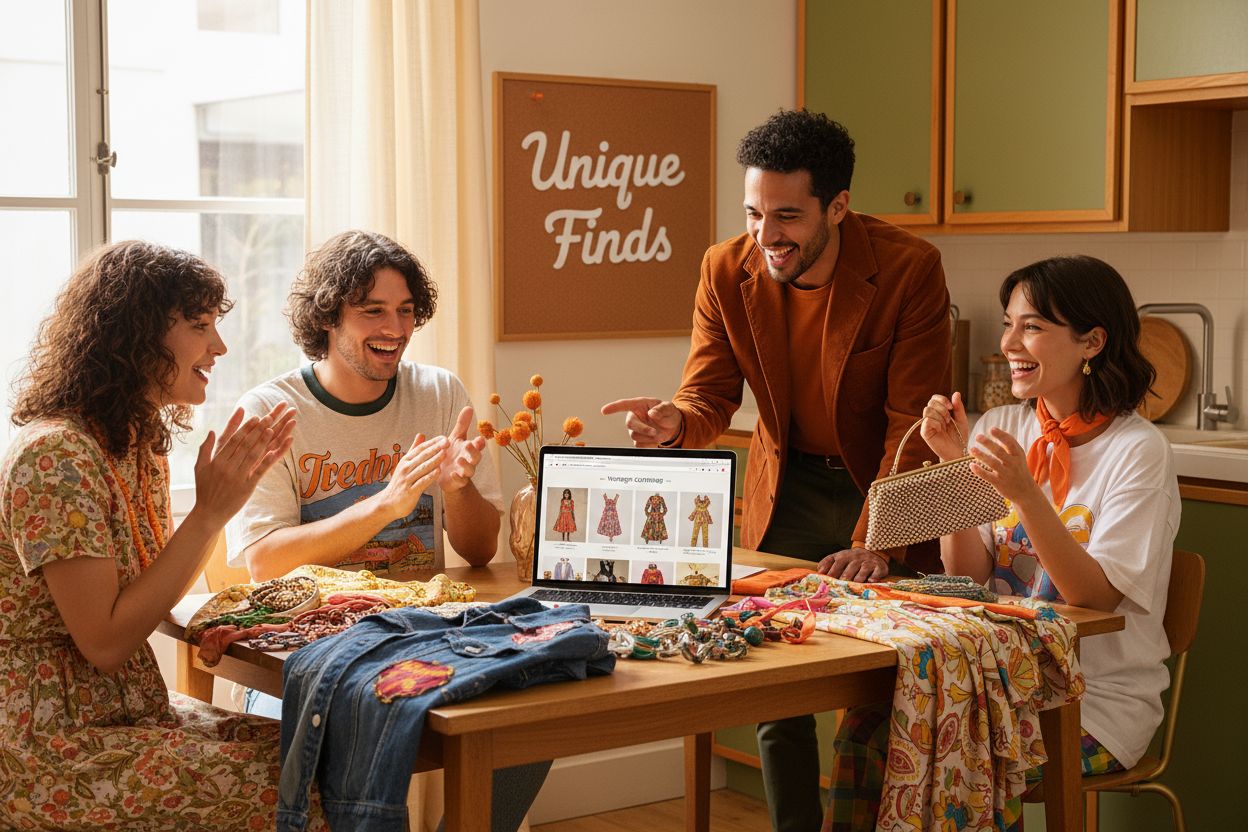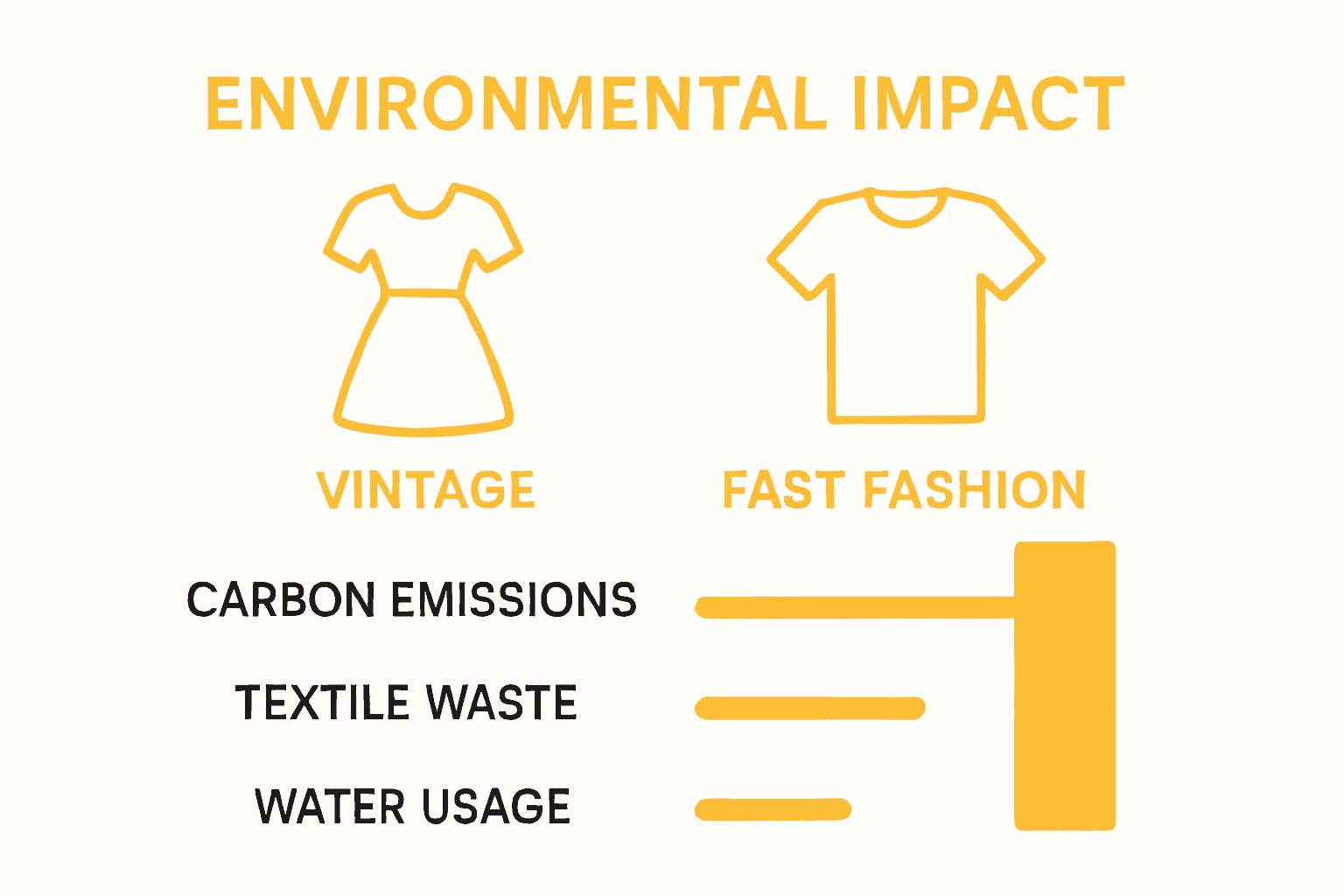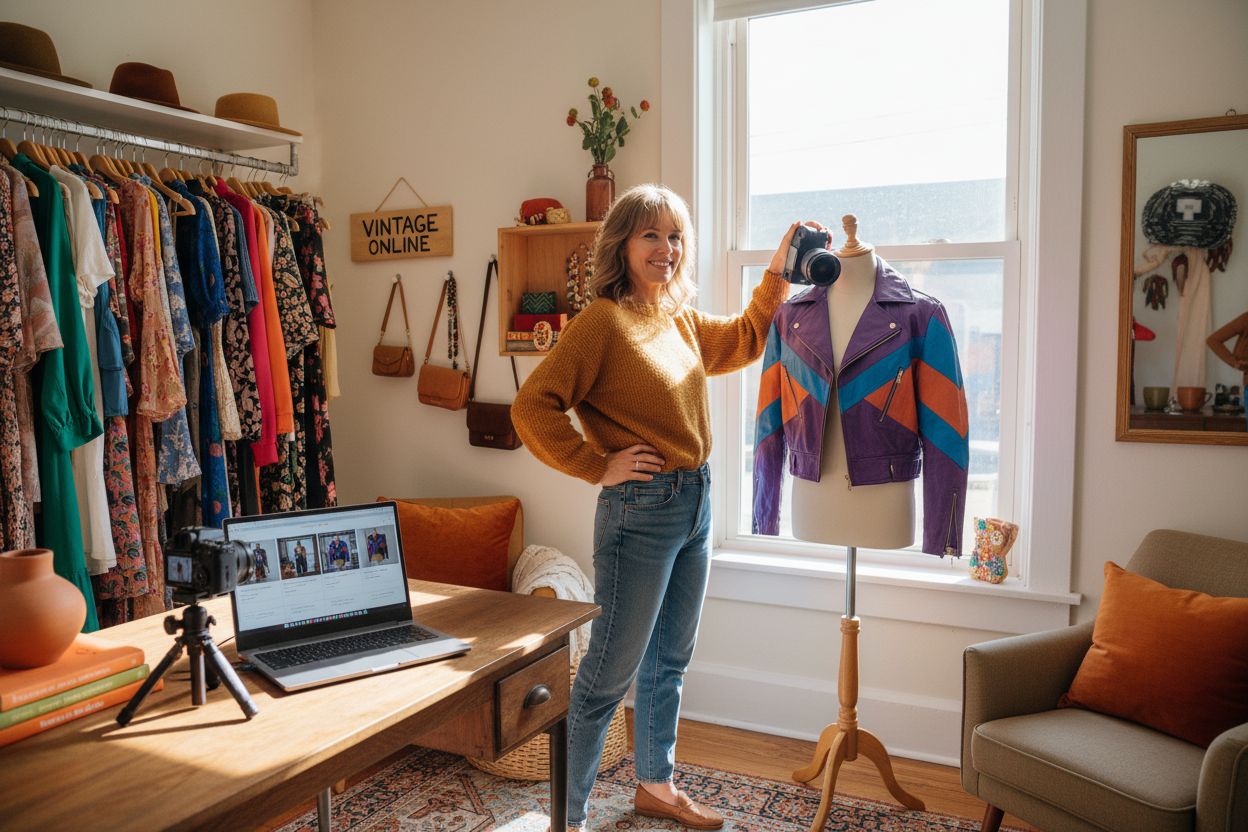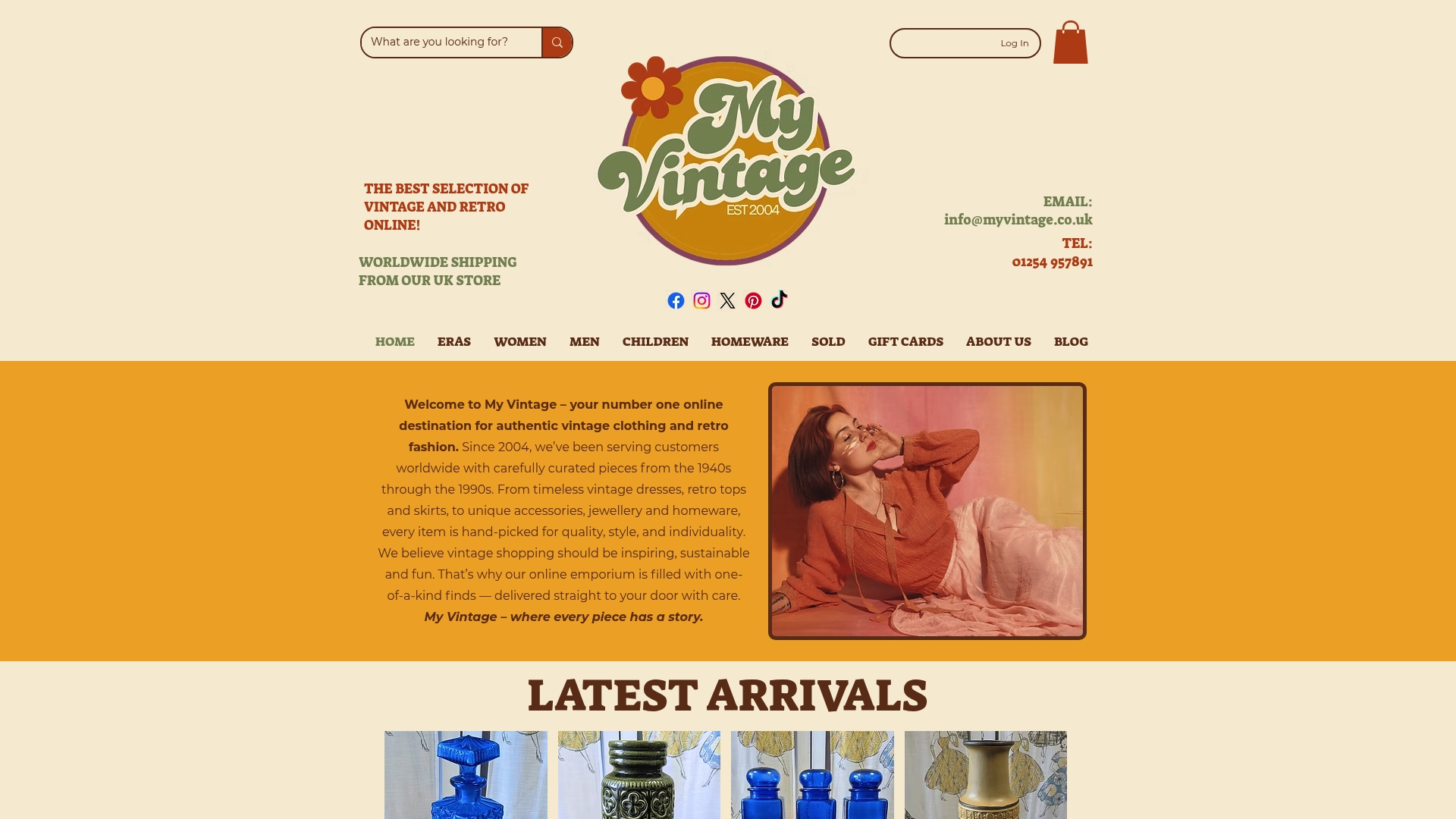Why Shop Vintage Online for Unique Finds?
- steve witt
- Oct 4
- 7 min read

Shopping vintage online sounds like a quirky hobby or a clever way to snag retro flair, but over 90 million garments are resold each year through digital platforms. That is not just a small trend. Here is the real shocker: buying vintage online is quietly powering a fashion revolution, slashing waste and shrinking carbon footprints on a global scale. The retro racks are now setting the pace for tomorrow’s most sustainable wardrobes.
Table of Contents
Quick Summary
Takeaway | Explanation |
Online vintage shopping offers global access. | Shoppers can connect with sellers worldwide, making rare pieces available from multiple locations. |
Authenticity verification is crucial. | Understanding item provenance ensures buyers receive genuine, quality vintage pieces verified by experts. |
Vintage shopping supports sustainability goals. | Choosing pre-owned items reduces textile waste and encourages sustainable fashion practices compared to fast fashion. |
Vintage pieces reflect unique personal styles. | These items let individuals express their identities through distinct historical artefacts that tell stories. |
Online platforms enhance the vintage experience. | They provide education, community engagement, and historical context, transforming shopping into cultural exploration. |
What Does It Mean to Shop Vintage Online?
Shopping vintage online represents a dynamic and immersive approach to discovering and acquiring pre-owned clothing, accessories, and homeware from specific historical periods. Unlike traditional retail experiences, this digital method allows fashion enthusiasts to explore curated collections from different eras without geographical limitations. Our comprehensive online vintage shopping guide provides deeper insights into this fascinating world of retro fashion.
Understanding the Digital Vintage Marketplace
The online vintage shopping experience transcends mere transactional interactions. It involves a sophisticated ecosystem where collectors, fashion historians, and style enthusiasts connect through specialised platforms. Buyers can now explore meticulously curated collections featuring authentic pieces from various decades, ranging from 1940s wartime elegance to 1990s grunge aesthetic.
Key characteristics of online vintage shopping include:
Global Access: Connecting buyers with sellers worldwide
Detailed Provenance: Comprehensive item histories and authenticity verification
Extensive Selection: Rare and unique pieces not available in conventional retail
Navigating the Authentication and Curation Process
Authentic online vintage shopping requires understanding complex verification processes.
According to Vintage Fashion Guild, reputable platforms employ expert curators who meticulously examine each item’s construction, fabric, stitching, and historical context. These specialists can determine an item’s precise era, origin, and potential collectible value.
The digital marketplace has transformed vintage shopping from a niche hobby into a sophisticated, globally accessible method of acquiring distinctive fashion and homeware. By leveraging technology and expert knowledge, online vintage platforms offer an immersive journey through fashion history, enabling individuals to discover pieces that tell unique stories and reflect personal style beyond contemporary mass-produced fashion.
To clarify how online vintage platforms differ from conventional retail and traditional in-person vintage shopping, the table below compares key characteristics mentioned in the article.
Feature / Characteristic | Online Vintage Platforms | Traditional In-Person Vintage Shops | Mainstream Fashion Retail |
Global Access | Connects buyers and sellers worldwide | Typically restricted to local customers | Often global, but with standardised stock |
Authentication/Provenance | Expert curation and advanced digital tools | Dependent on seller expertise | Not relevant for mass-produced items |
Item Selection | Extensive, rare and unique offerings | Limited by local stock | Large but largely homogeneous |
Community & Education | Provides historical context, guides, community engagement | Varies, may have knowledgeable owners | Minimal, mainly sales-focused |
Support for Sustainability | Encourages reuse, reduces textile waste | Supports reuse locally | Generally promotes new production |
The Importance of Vintage Shopping in Today’s World
Vintage shopping has emerged as a powerful cultural and economic response to contemporary challenges in fashion consumption, sustainability, and individual expression. Understanding the role of vintage in style reveals how this approach transcends mere clothing acquisition and represents a sophisticated lifestyle choice.
Sustainability and Ethical Fashion Considerations
In an era of environmental consciousness, vintage shopping offers a meaningful alternative to fast fashion’s environmental impact. According to the Ellen MacArthur Foundation, textile production generates more carbon emissions than international flights and maritime shipping combined. Vintage shopping directly challenges this trend by:

Reducing demand for new textile production
Extending clothing lifecycle
Minimising textile waste in landfills
Promoting circular fashion economies
Cultural Preservation and Individual Expression
Beyond environmental benefits, vintage shopping serves as a critical mechanism for cultural preservation. Each vintage piece represents a tangible connection to historical design movements, craftsmanship techniques, and social narratives. Collectors and fashion enthusiasts use these items to explore personal identity, challenge contemporary fashion norms, and celebrate distinctive aesthetic traditions.
The economic implications are equally significant. Vintage shopping supports small businesses, independent sellers, and artisan communities, creating a more distributed and resilient fashion ecosystem. By choosing vintage, consumers actively participate in a global movement that values quality, uniqueness, and sustainable consumption practices.
The following table outlines the main ways vintage shopping contributes to sustainability and cultural value, as discussed throughout the article.
Contribution Area | Vintage Shopping Impact |
Sustainability | Reduces textile waste, extends clothing lifecycle, lowers carbon footprint |
Ethical Fashion | Challenges fast fashion by reducing demand for new textile production |
Circular Economy | Promotes reuse and alternative economic models for consumption |
Cultural Preservation | Maintains historical design, craftsmanship, and social narratives |
Individual Expression | Allows for unique style, distinct from contemporary mass-produced fashion |
Economic Benefits | Supports small businesses, independent sellers, and artisan communities |

How Online Platforms Are Transforming Vintage Shopping
Online platforms have fundamentally revolutionised the vintage shopping landscape, creating unprecedented opportunities for collectors, fashion enthusiasts, and sustainable shoppers. Our guide on tips for buying vintage online offers deeper insights into navigating these digital marketplaces effectively.
Advanced Digital Authentication Technologies
Modern online vintage platforms leverage cutting-edge technologies to ensure authenticity and quality. According to Deloitte’s Digital Consumer Trends Report, advanced verification processes now include:
Artificial intelligence image recognition
Blockchain-based provenance tracking
Detailed metadata documentation
Expert curator verification systems
Global Marketplace Democratisation
Digital platforms have dismantled traditional geographical barriers in vintage shopping. Small independent sellers from global locations can now connect directly with international buyers, creating a more inclusive and diverse marketplace. This democratisation allows niche collectors to access rare pieces from previously inaccessible regions, transforming vintage shopping from a localised experience into a global cultural exchange.
The technological infrastructure supporting these platforms goes beyond mere transactional spaces. They have evolved into comprehensive ecosystems that combine commerce, education, and community engagement. By providing detailed historical context, preservation guidelines, and expert insights, online vintage platforms are not just selling clothing but preserving and celebrating fashion heritage in unprecedented ways.
Key Benefits of Buying Vintage Items Online
Online vintage shopping offers a sophisticated and nuanced approach to acquiring unique fashion and homeware pieces that transcend traditional retail experiences. What is thrift fashion and its broader impact? explores the philosophical underpinnings of this emerging consumer trend.
Economic and Personal Value Proposition
Buying vintage items online presents a compelling economic model that challenges conventional consumption patterns. According to McKinsey & Company’s Sustainability Report, second-hand markets are experiencing exponential growth, driven by economically savvy and environmentally conscious consumers.
Key economic advantages include:
Significantly lower price points compared to contemporary retail
Investment potential for rare or collectible pieces
Access to high-quality craftsmanship at affordable prices
Reduced personal fashion expenditure
Unparalleled Individuality and Sustainability
Vintage online shopping enables consumers to curate distinctive personal styles while simultaneously contributing to sustainable fashion ecosystems. Each vintage piece represents a unique narrative, allowing individuals to express personal identity through carefully selected historical artefacts. By choosing pre-owned items, consumers directly reduce textile waste, minimise carbon footprints, and challenge the disposable nature of contemporary fashion production.
Moreover, online platforms democratise access to vintage collections, enabling global consumers to discover extraordinary pieces that reflect diverse cultural aesthetics and design movements. This approach transforms shopping from a mere transactional experience into a form of cultural exploration and personal storytelling.
The Role of Vintage Shopping in Sustainable Living
Vintage shopping represents a transformative approach to sustainable consumption, offering individuals a meaningful pathway to reduce environmental impact while celebrating unique fashion heritage. Vintage clothing as the ultimate sustainable fashion choice provides deeper context into this revolutionary consumption model.
Circular Economy and Textile Waste Reduction
Sustainable living requires radical reimagining of consumption patterns. According to the Ellen MacArthur Foundation’s Circular Economy Report, vintage shopping directly contributes to circular economic principles by:
Extending clothing lifecycle beyond initial production
Reducing demand for new textile manufacturing
Minimising textile waste in global landfills
Creating alternative economic models for fashion consumption
Embodied Carbon and Environmental Impact
Each vintage garment represents a significant reduction in embodied carbon compared to newly manufactured clothing. By choosing pre-owned items, consumers effectively prevent additional carbon emissions associated with textile production, transportation, and industrial processing. Vintage pieces have already completed their initial carbon-intensive manufacturing cycle, making them inherently more sustainable than contemporary fast fashion alternatives.
Moreover, vintage shopping transcends mere consumption. It represents a philosophical commitment to responsible consumerism, cultural preservation, and environmental stewardship. By curating and valuing historical fashion pieces, individuals participate in a global movement that challenges disposable fashion paradigms and celebrates craftsmanship, durability, and timeless design.
Ready to Discover Rare Vintage Treasures Online?
Looking for authentic vintage pieces that truly express your style while making a positive impact? The article highlights the challenges of finding unique, sustainable fashion and homeware, especially when overwhelmed by choices that lack real provenance or individuality. At My Vintage, every item is meticulously curated to offer you genuine classics from the 1940s to the 1990s. Our platform was created for those who want more than fleeting trends, supporting your search for originality and eco-conscious living.

Do not settle for ordinary when you can own something extraordinary. Explore our handpicked collections on My Vintage, where quality, authenticity, and sustainability come together. Secure your unique find today before it disappears to another fashion lover. Your journey towards a distinctive, carefully sourced wardrobe and home starts here—visit our site now.
Frequently Asked Questions
What are the benefits of shopping vintage online?
Shopping vintage online provides access to unique and rare items, supports sustainability by reducing demand for new textiles, and fosters individual expression through distinctive fashion choices.
How can I ensure the authenticity of vintage items when shopping online?
To ensure authenticity, look for reputable platforms that employ expert curators, provide detailed item histories, and utilise advanced technologies, such as AI image recognition and blockchain tracking.
Why is vintage shopping considered more sustainable than fast fashion?
Vintage shopping extends the lifecycle of clothing, reduces textile waste, and diminishes the demand for new manufacturing, making it a more environmentally friendly choice compared to fast fashion.
How does online vintage shopping contribute to cultural preservation?
Each vintage piece embodies historical design movements and craftsmanship techniques, allowing consumers to celebrate and preserve cultural narratives through their fashion choices.
Recommended







Comments